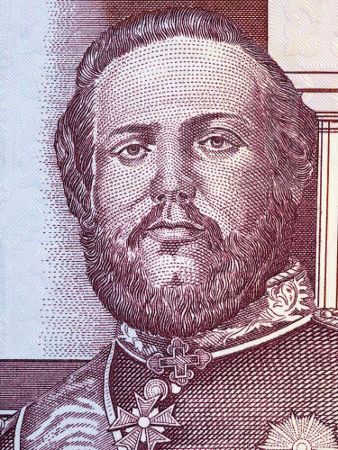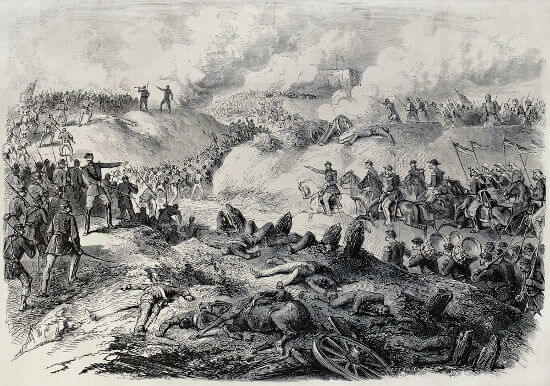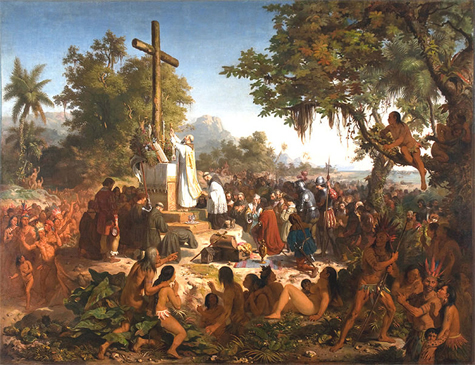THE Paraguay War it was the biggest confrontation in the history of South America and was fought from the end of 1864 until 1870. This war mobilized Brazil, Argentina and Uruguay in alliance against the Paraguay for issues of political, territorial and economic interest in the platinum basin region. The outcome of this conflict was disastrous in different ways for the sides involved: Brazil left with its economy in crisis and with high indebtedness and Paraguay was devastated by the war.
Historiographic debates: the Paraguay War by historians
The Paraguay War is one of the most complex issues and has generated great controversy within historiography. Today, the understanding of this war is completely different from that which existed in the mid-1990s. The new understanding of this conflict stemmed from recent studies carried out by Paraguayan and Brazilian historians who had access to extensive documentation, which had not been analyzed until then.
Over time, three interpretations (historians call this the
historiography) about the conflict became popular at different times in Brazil, and the current one is the most complete of them. The different historiographies about this war are the traditional, a revisionist and the post-revisionist or new historiography.THE traditional historiography it pointed to the war solely and exclusively as a result of the megalomania of Solano López, dictator of Paraguay, and disregarded a series of relevant events in the geopolitical context of the platinum basin. This historiography was very common in Brazil in the early 20th century until the 1960s, approximately.
THE revisionist historiography it was well known in Brazil in the 1960s until the mid-1990s. According to this historiography, Paraguay was a model of autochthonous (native) development and unique in the La Plata basin. This would displease England, which, in order to subject Paraguay to English capitalism, manipulated Brazil and Argentina into fighting and destroying Paraguay's economic model.
Today this historiography is considered by historians as outdated and imprecise, as it ignores several facts from the platinum context and is much criticized by not have documentary proof. The new studies were carried out in a pioneering manner by Paraguayan and Brazilian historians, among which stand out Juan Carlos Herken Krauer, MariaIsabelGimenezinherken, RicardoSalles and FranciscoDoratioto.
Paraguay in the 19th century

Portrait of Francisco Solano López taken from a guaraní banknote (Paraguayan currency).
More recent studies prove that Paraguay was not a developed nation, a fact different from what was presented by historians decades ago. Ruled by dictators for decades, Paraguay was isolated from the rest of the world for a long period. This Paraguayan isolation is explained by the fact that Buenos Aires did not accept the country's independence and separation from what had been the Viceroyalty of Rio de la Plata.
This policy of isolation in Paraguay had been imposed at the beginning of the 19th century by the dictator José Gaspar Rodríguez de Francia and it was seen by him as the best way to guarantee Paraguayan independence. This measure was only revoked during the government of Carlos Antonio López, which maintained, however, the dictatorial government.
Carlos Antonio López was the father of Francisco Solano López, a dictator who took over Paraguay in 1862 when his father died. Solano López maintained the dictatorial government that had been the hallmark of Paraguay since its independence. During the López governments, this country underwent a small process of modernization, however, according to historian Francisco Doratioto, this modernization was limited to military means. and did not reach other areas of Paraguay|1|.
This modernization of military means was carried out mainly from negotiations made with England, with the acquisition of armaments English and sending English technicians to Paraguay to train local armies and develop related infrastructure area. About this, follows Doratioto's comment:
The image constructed by a certain historical revisionism that pre-1865 Paraguay promoted its industrialization from “inside” is fanciful. with its own resources, without depending on the capitalist centers, to the point of supposedly becoming a threat to the interests of England in the Silver. The Guarani infrastructure projects were supported by British capital goods and most of the foreign specialists who implemented them were British.
[…] The presentation of Paraguay as a State where there would be social equality and advanced education is also wrong. The reality was different and there was a promiscuous relationship between the interests of the State and those of the López family, which knew how to become the largest “private” owner of the country while in power|2|.
Solano López's dictatorial government was marked by the persecution of his opponents – many of them were killed, imprisoned or forced to flee to Buenos Aires. Furthermore, there was no congress that functioned continuously and independently, and the judiciary functioned to serve the personal interests of the country's dictator. Thus, in practice, the only authoritative voice in Paraguay was Solano López himself.
Do not stop now... There's more after the advertising ;)
Causes
THE The Paraguayan War resulted from the contradictions and disputes that were waged by the nations in the geopolitical framework of the second half of the 19th century. Far from being caused by England, there is evidence that the British tried to prevent the beginning of this conflict. In addition, Brazil and England had severed relations from 1862 to 1865 as a result of the Christie question.
In the second half of the 19th century, the platinum nations were consolidating institutionally, with that, there were a series of border issues in dispute. Paraguay sought to reinforce its regional position as a third power and disputed border territories with Brazil and Argentina.
Argentina, led by Bartholomew Miter, sought to consolidate its territory, prevent further territorial fragmentation and defeat the rebels federalists of the provinces of Between Rivers and Currents. Uruguay lived years of turmoil because of the civil war waged between political factions white and colorado. Brazil, on the other hand, sought to strengthen its position as a power and guarantee the free navigation of the platinum basin.
The situation in the region between the four nations began to take complicated directions from 1862 onwards. On that date, Solano López took over as Paraguayan president and tried to strengthen relations with the federalist movement that was fighting against the government of Buenos Aires. This rapprochement between Paraguayans and Argentine federalists made it possible to link Paraguay with the white Uruguayans.
Paraguay's approximation with the whites, who ruled Uruguay with the president Bernardo Berro, allowed Paraguayans to use the port of Montevideo as an alternative access to the sea. You white Uruguayans, in turn, waged a war against a local political faction known as colorado. You colorado had the support of the Argentine government of Miter, as the white they were allies of the federalists – enemies of the Argentine government.
You colorado they were liberals and advocates of free trade and free navigation on the rivers of the platinum region. These principles were the same ones defended by the Brazilian government at that time, especially the free navigation that it was vital for the central government to maintain contact with the province of Mato Grosso (at the time, the only way to reach Cuiabá was by navigating the rivers of the platinum basin). Thus, there was an ideological approximation between Brazil and the colorado.
Starting in 1863, the Brazilian government, pressured by ranchers from Rio Grande do Sul, carried out a policy of intervention in the Uruguayan Civil War on the side of colorado. The Brazilian attitude had as a pretext the reparation against aggressions made by white against Brazilian citizens in Uruguay. Argentina supported the Brazilian intervention in favor of colorado, but not directly involved.
The Brazilian interest in interfering in this Uruguayan conflict, by supporting the colorado, strongly displeased Solano López, an ally of the white. Solano López received reports of the events of the Uruguayan Civil War through radical representatives of the white, which convinced him that the Brazilian action was aimed at annexationist interests and that the next target nation of this expansionism was Paraguay. Brazil, however, had no expansionist interests, since it was solely focused on economic issues, aiming to guarantee the business of Brazilians in Uruguay and to remove the white strongly anti-Brazilian.
Incorrectly convinced that Brazil posed a threat to Paraguay's sovereignty, Solano López gave an ultimatum to the Brazilian government, in August 1864, not to intervene in Uruguayan affairs. The Brazilian government ignored the Paraguayan warnings and, in September of the same year, invaded Uruguay in support of the colorado. The Brazilian invasion ousted the government white and put the colorado in power with Venancio Flores in the presidency of Uruguay.
By this time, Paraguay already had a huge army ready to go into action. Thus, as a reprisal for Brazil's invasion of Uruguay, Paraguay imprisoned a Brazilian vessel that was navigating the Paraguay River – the Marquis of Olinda - and invaded Mato Grosso in December 1864.
Argentina's entry into the conflict occurred when Paraguayan troops, with the objective of helping the white Uruguayans invaded Argentine territory. This invasion happened because President Miter did not authorize the passage of Paraguayan troops through Argentine territory, heading towards Rio Grande do Sul. With that, Brazil, Argentina and Uruguay – now ruled by the colorado – gathered in an alliance against the Paraguayan government.
|1| DORATIOTO, Francisco. Damn War: new history of the Paraguayan War. São Paulo: Companhia das Letras, 2002, p. 29.
|2| Idem, p. 29-30.
By Daniel Neves
Graduated in History



